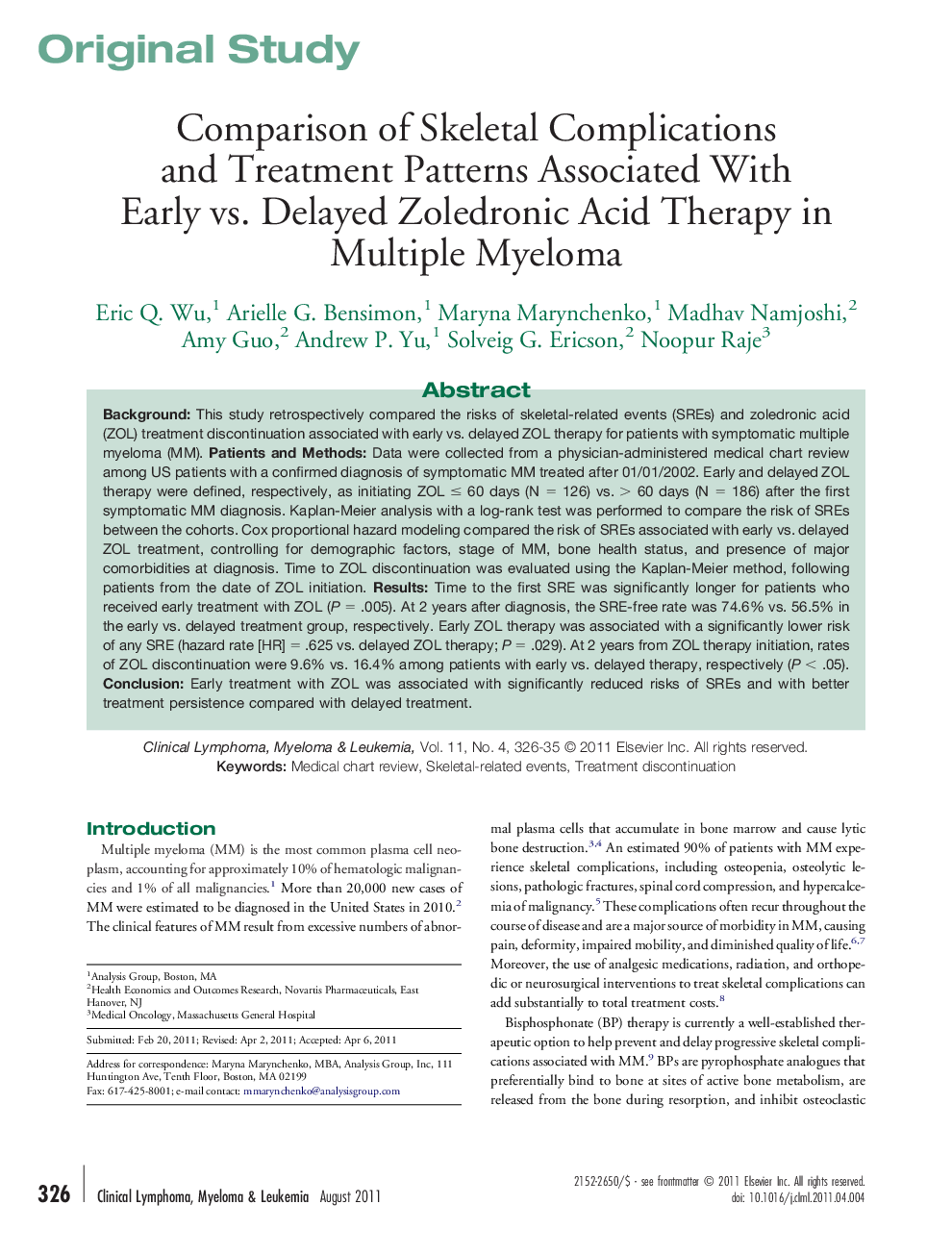| Article ID | Journal | Published Year | Pages | File Type |
|---|---|---|---|---|
| 2754561 | Clinical Lymphoma Myeloma and Leukemia | 2011 | 10 Pages |
BackgroundThis study retrospectively compared the risks of skeletal-related events (SREs) and zoledronic acid (ZOL) treatment discontinuation associated with early vs. delayed ZOL therapy for patients with symptomatic multiple myeloma (MM).Patients and MethodsData were collected from a physician-administered medical chart review among US patients with a confirmed diagnosis of symptomatic MM treated after 01/01/2002. Early and delayed ZOL therapy were defined, respectively, as initiating ZOL ≤ 60 days (N = 126) vs. > 60 days (N = 186) after the first symptomatic MM diagnosis. Kaplan-Meier analysis with a log-rank test was performed to compare the risk of SREs between the cohorts. Cox proportional hazard modeling compared the risk of SREs associated with early vs. delayed ZOL treatment, controlling for demographic factors, stage of MM, bone health status, and presence of major comorbidities at diagnosis. Time to ZOL discontinuation was evaluated using the Kaplan-Meier method, following patients from the date of ZOL initiation.ResultsTime to the first SRE was significantly longer for patients who received early treatment with ZOL (P = .005). At 2 years after diagnosis, the SRE-free rate was 74.6% vs. 56.5% in the early vs. delayed treatment group, respectively. Early ZOL therapy was associated with a significantly lower risk of any SRE (hazard rate [HR] = .625 vs. delayed ZOL therapy; P = .029). At 2 years from ZOL therapy initiation, rates of ZOL discontinuation were 9.6% vs. 16.4% among patients with early vs. delayed therapy, respectively (P < .05).ConclusionEarly treatment with ZOL was associated with significantly reduced risks of SREs and with better treatment persistence compared with delayed treatment.
